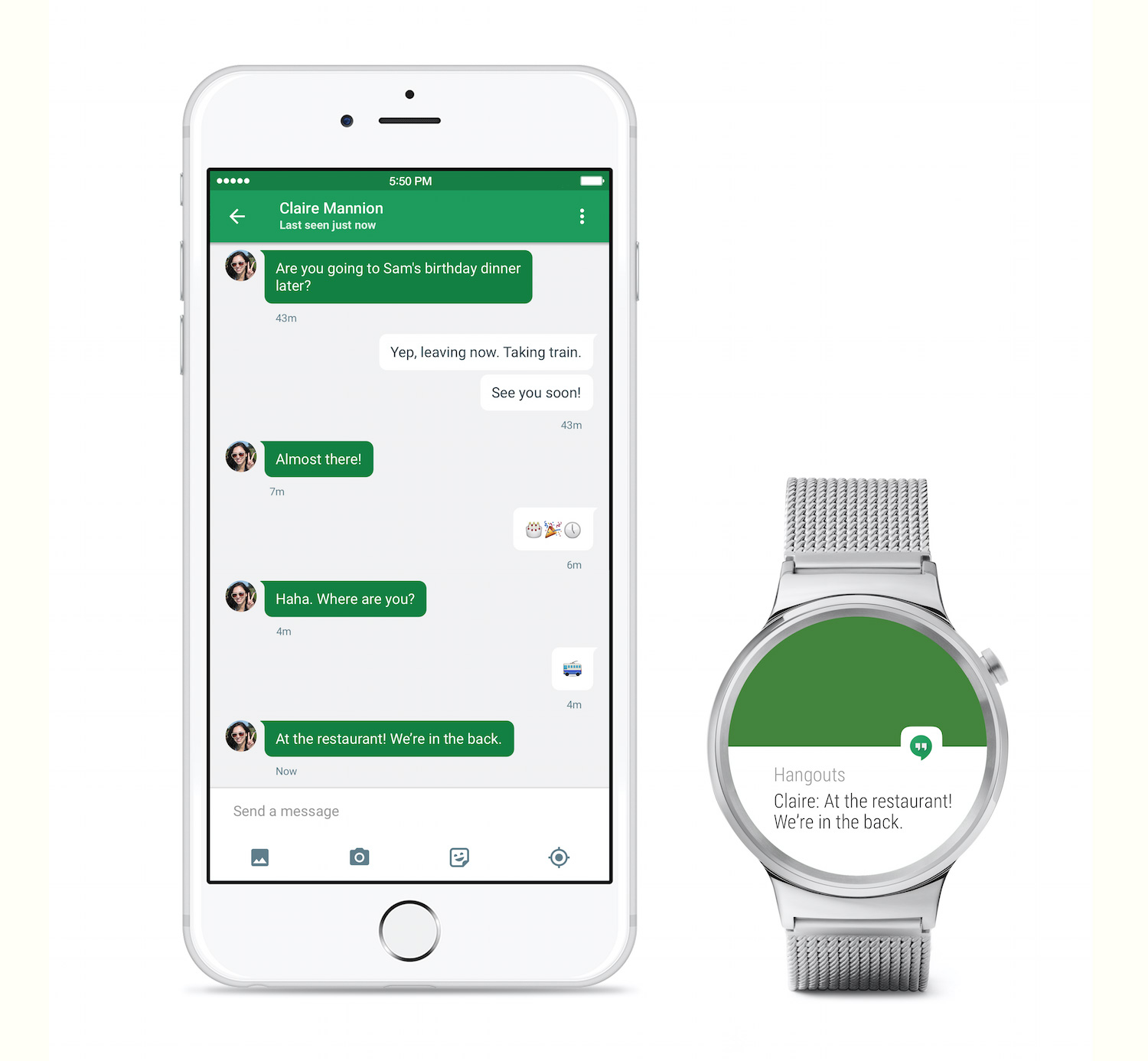Android Wear Comes to iPhones: What Works, What Doesn't
It's coming: the Android Wear app for iOS devices will let you use a Google smartwatch with an iPhone. Here are the features that made the cut.

Your move, Apple. Google just announced that an Android Wear app will be available for iOS devices, meaning anyone can get an Android Wear smartwatch and pair it to an iPhone.
Google wants to ensure than anyone, no matter their smartphone, can wear Android on their wrists and get the full smartwatch experience. However, because of Apple's restrictions, not every feature of Android Wear will be available to iPhone users. Here are the features that work and don't work for Android Wear on the iPhone.
| Feature | Yes | No |
|---|---|---|
| iPhone notifications | X | |
| Google Now information cards | X | |
| Different watchfaces | X | |
| Voice search using Google Now | X | |
| Google Fit activity tracking | X | |
| Reply to notifications from watch | X | |
| Third-party watchfaces | X | |
| Third-party Android Wear apps | X |
The Android Wear for iOS app will work with iPhone 5s and newer phones. It supports three smartwatches so far: the LG Watch Urbane and the forthcoming Huawei Watch and Asus ZenWatch 2.
A Google blog post details the features of Android Wear for iOS, showing that it will be able to do most of the things the operating system can do when paired with an Android smartphone. An Android Wear smartwatch will receive all the notifications your iPhone receives, including texts, calls and app alerts. You'll also have access to Google Now information cards on the watches, which can show useful information like news alerts and weather updates.
MORE: Best Smartwatches
Voice commands using Google Now will also work on iOS-connected Android Wear watches. That means you can speak commands and questions to your smartwatch to pull up quick pieces of information. Google Fit, the company's health and activity tracking app, will be fully compatible as well.
The biggest drawback of using Android Wear on iOS is that you won't be able to reply to messages from third-party apps. For example, if you receive an iMessage from a friend, you'll be able to see the message on your watch, but you won't be able to send a canned reply from the watch. Instead, you'll have to open your iPhone and respond manually.
Get instant access to breaking news, the hottest reviews, great deals and helpful tips.
Since Apple doesn't allow other app stores into its own App Store, the third-party apps you can install on your Android Wear watch will be limited. This also goes for third-party watchfaces that are available for download from the Google Play Store — Google told The Verge that it has selected a number of third party watchfaces for iOS users to choose from in addition to Google's default watchfaces.
So while an Android Wear watch paired with an iPhone isn't exactly the same as one paired with a Galaxy S6, it will still be a robust smartwatch. Google included a couple features that make the iOS experience better as well: the Android Wear app will automatically block duplicating notifications from different apps, and watches will give you the option to "block app" when a notification pops up on the watch's display. So while you cannot manually choose which apps you want to receive notifications for on your wrist, you will be able to block, say, Twitter if you don't want your wrist buzzing incessantly throughout the day.
Making Android Wear compatible with Apple devices is in line with Google's mantra of allowing users to customize the experience they have with Google devices. "Be together, not the same" has been the company's slogan for a while, and that's extending into the company's wearables effort with the launch of fashion-forward watches like the LG Watch Urbane and the Huawei Watch. Not only do customers have more aesthetic choices in smartwatches with Google devices, but they can also save money: a basic Moto 360 costs $149, which is a pill more easily swallowed than the $349 Apple Watch.
The Android Wear app for iOS will roll out over time, and will support all forthcoming Android Wear smartwatches.
Valentina is Commerce Editor at Engadget and has covered consumer electronics for a number of publications including Tom's Guide, Wired, Laptop Mag and Ars Technica, with a particular focus on wearables, PCs and other mobile tech.

